Art World
The Women Artists of the Bloomsbury Group Channeled Their Creativity Into Gardens, Too
The Garden Museum's new exhibition features the fertile grounds beloved by Virginia Woolf, Vita Sackville-West, Vanessa Bell, and Lady Ottoline Morrell.

The women of the Bloomsbury group found solace and creative inspiration in their green spaces, from the Italian gardens of Virginia Woolf to Vita Sackville-West’s color-themed castle grounds. Each had an experimental and highly creative approach to gardening, whether evoking the design of classical English cottages, the idyllic planting of Mediterranean villas, or Persia’s vibrant flora. Many of these plots have been preserved to this day and are now open to the public, an enduring testament to the inventive spirit of their creation.
This month, London’s Garden Museum opens “Gardening Bohemia: Bloomsbury Women Outdoors,” an exhibition celebrating the imaginative domestic grounds of Virginia Woolf, Vita Sackville-West, Vanessa Bell, and Lady Ottoline Morrell. The show explores the personal approach that each took to their gardens, and the resulting creativity that these spaces inspired, from painting to poetry and interior design.
Virginia Woolf
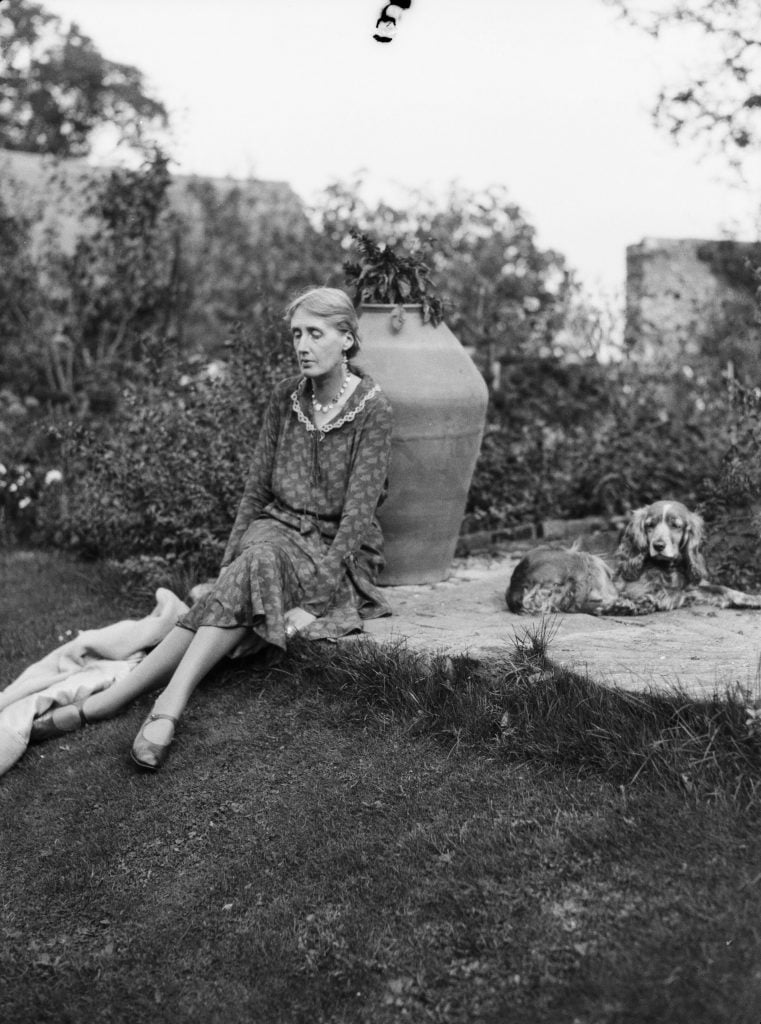
Virginia Woolf sitting on a grassy bank in front of a large urn; Virginia Woolf Monk’s House photographs, (ca 1867-1967.) Houghton Library, Harvard University. Cambridge, Mass.
In 1919, Bloomsbury writer Virginia Woolf moved to the 16th-century cottage Monk’s House, surrounded by almost an acre of land in Rodmell, Sussex. The garden was tended by Woolf’s husband, Leonard, and provided a space of solace during her long periods of psychological struggle and confinement. Part of the garden was inspired by trips to Italy, with a romantic brick terrace, peacock topiary, and stone figures. The land also features an orchard, full of apples, pears, plums, and more. Alongside this there is a vegetable garden and long flower border where the couple would play bowls in the evening.
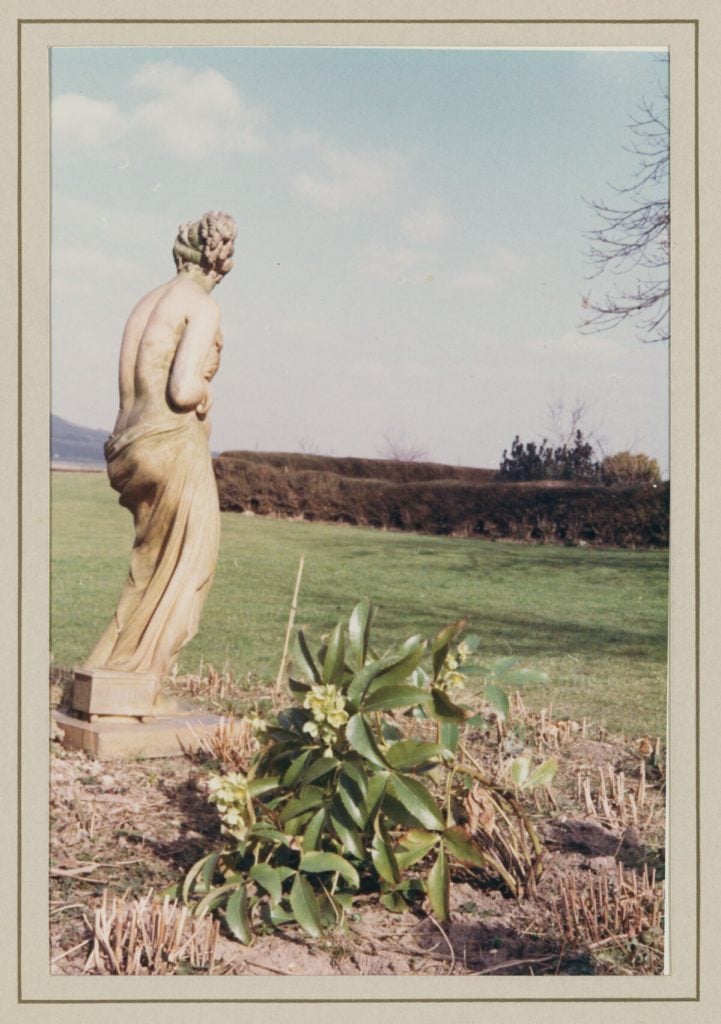
Gardens at Monk’s House (Rodmell, England) (1957, 1961, and undated.) Virginia Woolf Monk’s House photographs, (ca 1867-1967). Houghton Library, Harvard University. Cambridge, Mass.
Woolf’s renowned book, A Room of One’s Own, which asserts the importance of financial and creative independence for women, was written in a hut in the apple orchard. The house and garden are still open to the public, and both the writer and her husband are buried in the land, with two lime trees marking the location of a previously situated, intertwined pair of elm trees fittingly named Leonard and Virginia.
Vanessa Bell
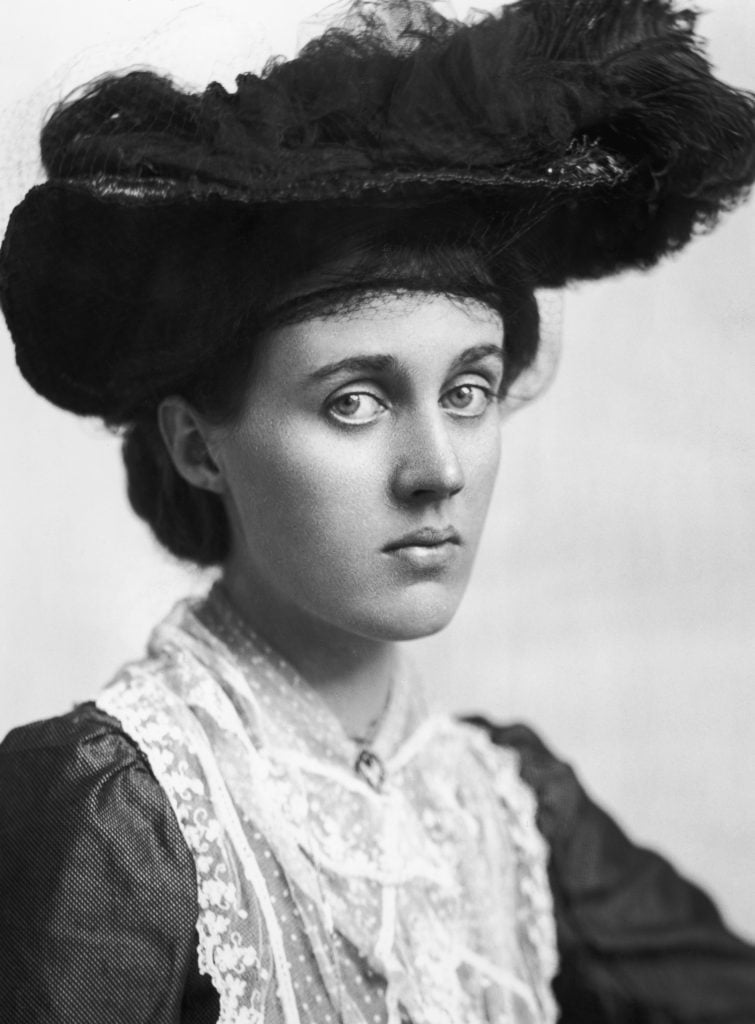
British artist Vanessa Bell (ca. 1910), the sister of Virginia Woolf and wife of art critic Clive Bell, all of whom were members of the Bloomsbury Group. Photo: George C. Beresford/Beresford/Hulton Archive/Getty Images.
Charleston House is the Sussex country home that provided solace for Woolf’s sister Vanessa Bell, her lover Duncan Grant, and his partner David Garnett during the First World War. The two men eschewed subscription as conscientious objectors while they worked the farmland on the estate, and together with Bell they turned the house into a radical work of art. The gardens were designed by artist Roger Fry in 1918, with a vibrant array of flowers lining neatly delineated paths and providing inspiration for the Bell and Grant’s paintings.
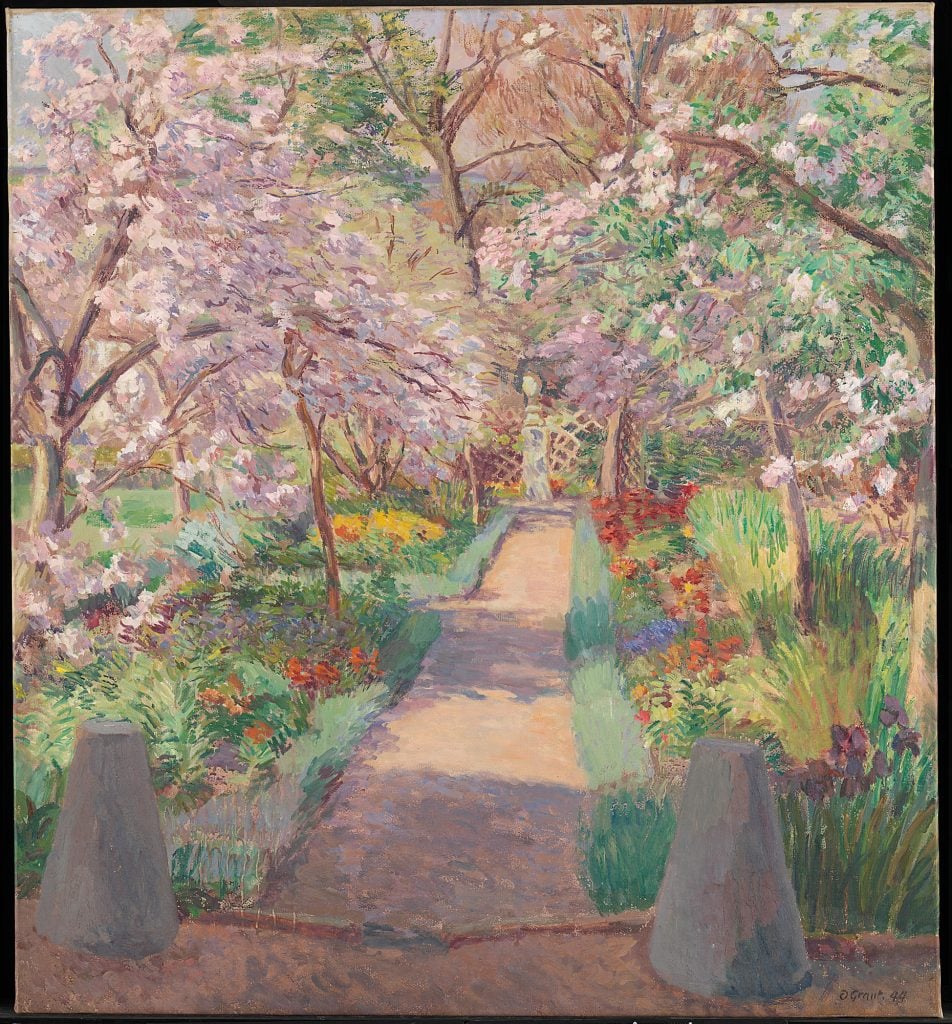
Duncan Grant, Garden Path in Spring, 1944 © The estate of Duncan Grant. All rights reserved, DACS 2023. Photo: Tate
In keeping with Bell’s bohemian approach to interior design, the garden is punctuated with creative details such as mosaic tile floor patterns, stone sculptures of nude women, and hand-painted tiles encircling the pond. The garden, like the house, was a creative hub for the inhabitants and their thriving social circle, providing a space for radical thought, sexual exploration, writing, and art making. Charleston House remains open to the public, and a major retrospective of Bell’s painting opens later this month at The Courtauld.
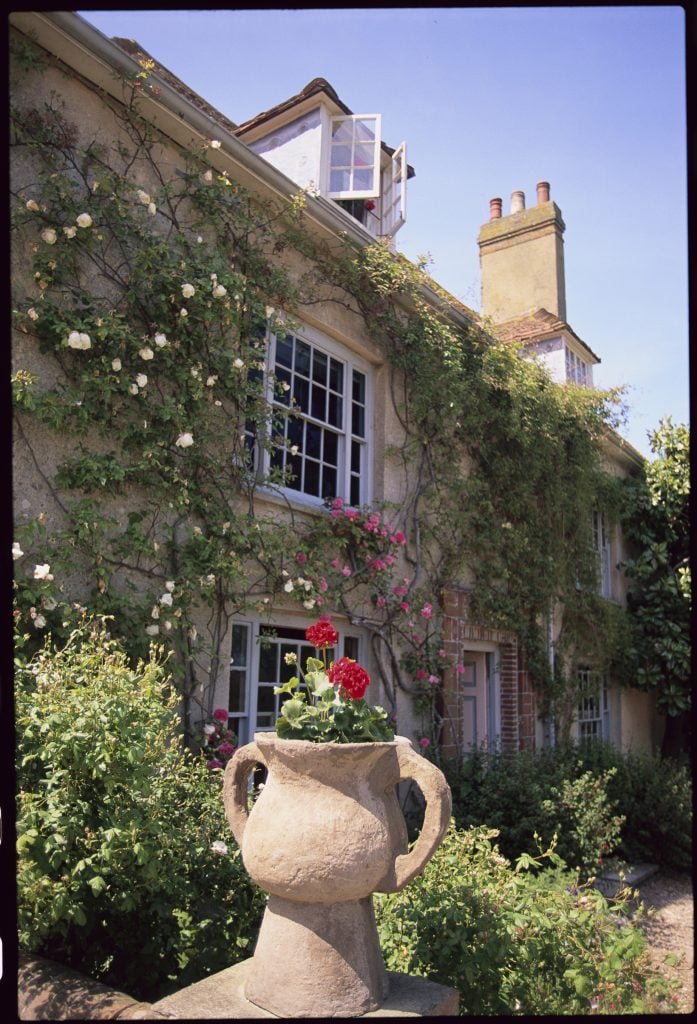
Charleston House was the country home of artists Vanessa Bell and Duncan Grant. The Bloomsbury Group of artists and writers spent summers at the house. Photo by Nik Wheeler/Corbis via Getty Images.
Lady Ottoline Morrell
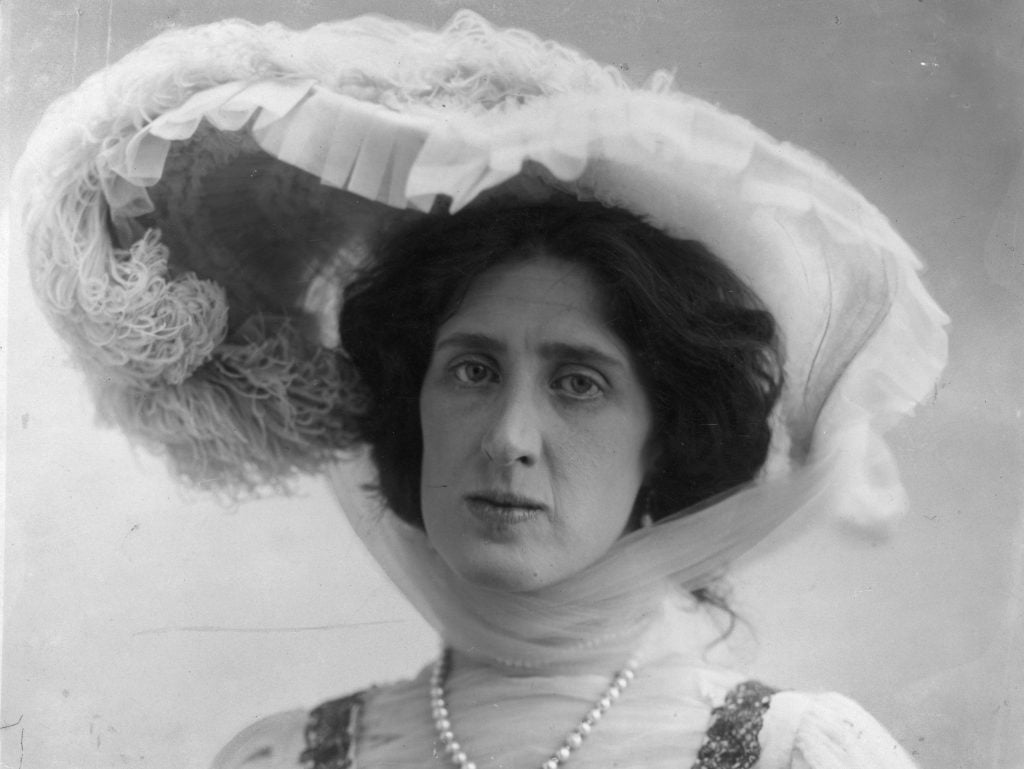
Portrait of Lady Ottoline Morrell, 1903. Photo by George C. Beresford/Beresford/Hulton Archive/Getty Images
Society hostess and arts patron Lady Ottoline Morrell also made use of her farmland at Garsington Manor to provide work to conscientious objectors during the First World War. She saw the home and its garden as a “theatre for social gatherings”, inviting visitors to respond to the space she has created with poetry and artwork. The multiple gardens were initiated by Morrell, taking inspiration from Italy’s Villa Capponi, which at the time belonged to her aunt.
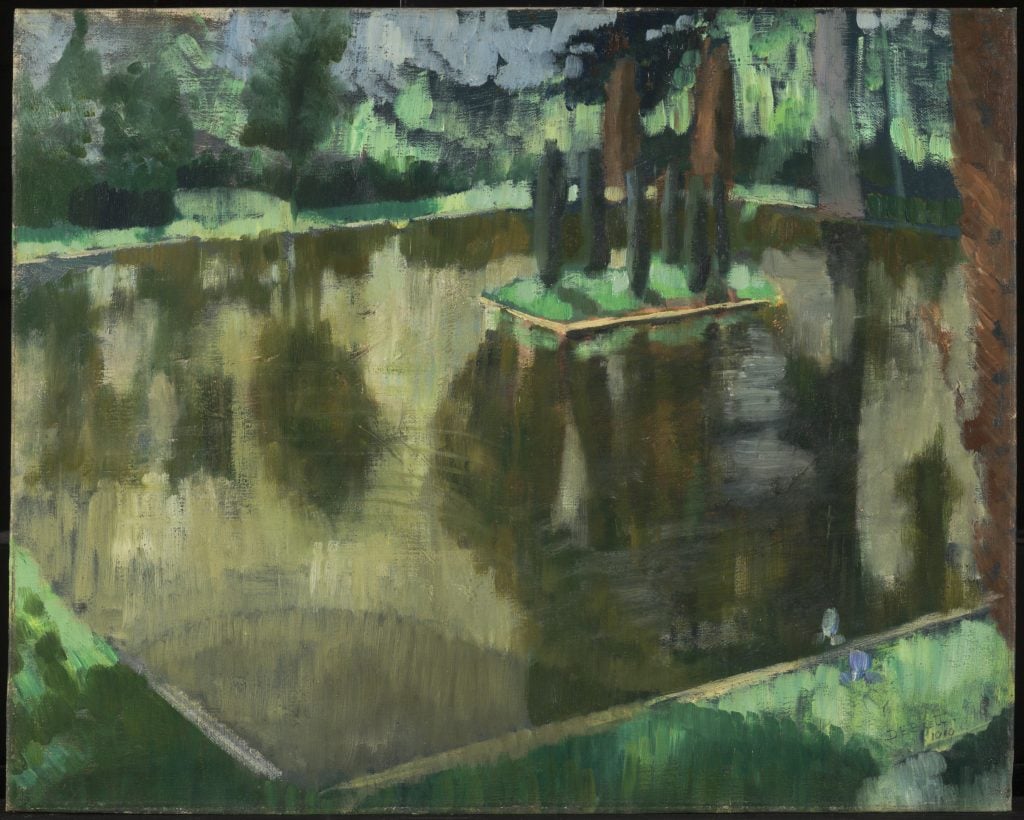
Dorothy Brett, Pond at Garsington, (1919). Tate, presented by Tate Members 2012 © The Estate of Dorothy Brett. Photo: Tate
Together with renowned designer Penelope Hobhouse, she renovated the walled garden, which sits about one mile from the main house and had originally been created by Richard Woods in the mid-1700s. There is also a yew garden surrounding a large ornamental pool; a selection of monastic fishponds; vegetable patches; a rose garden; and a space filled with wild plants. The garden makes creative use of hedges, which hide and reveal carefully curated views as visitors walk through them.
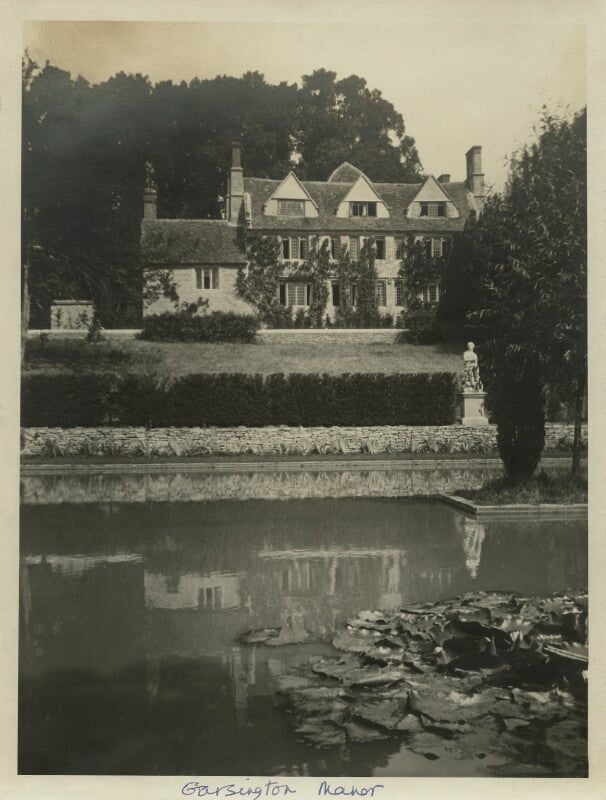
Garsington Manor by Lady Ottoline Morrell. Vintage snapshot print, (1923). © National Portrait Gallery, London.
Vita Sackville-West
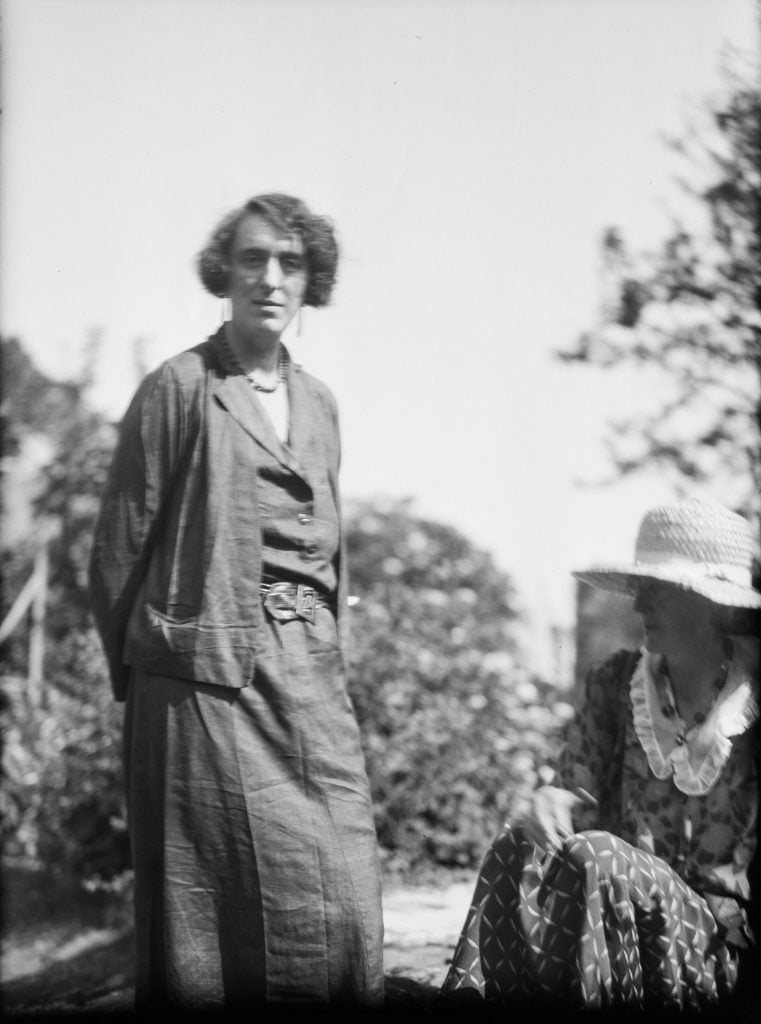
V. (Victoria) Sackville-West standing outdoors next to a seated Virginia Woolf, undated. Virginia Woolf Monk’s House photographs, (ca. 1867-1967.) Houghton Library, Harvard University. Cambridge, Mass.
Woolf’s lover, Vita Sackville-West, created a garden at Sissinghurst Castle which featured “rooms” themed by color. The novelist and poet was interested in the textural and formal focus that comes to the fore when color is restricted. She had been inspired by trips to Persia and created the garden as a sanctuary and source of poetic inspiration for herself and her husband, the writer and diplomat Harold Nicolson.
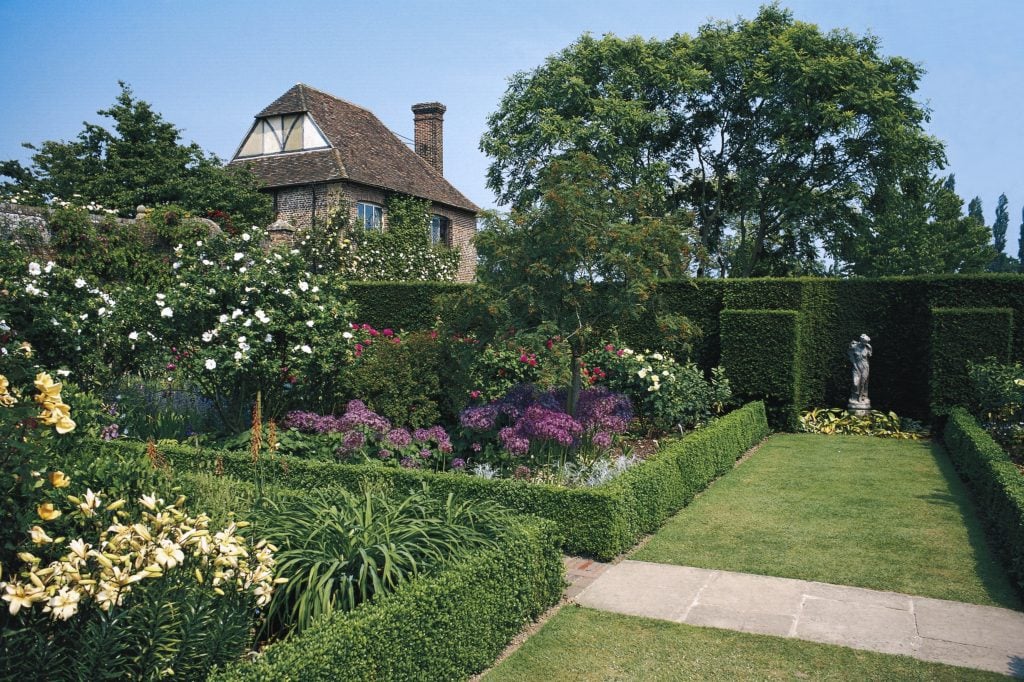
Sissinghurst Castle Garden, 1930, designed by Vita Sackville-West and Harold Nicolson, Kent, England, United Kingdom. Photo by DEA / G. WRIGHT via Getty Images
Sackville-West was particularly inspired by the walls when she moved to Sissinghurst in the 1930s. She covered these crumbling brick structures in climbing plants, from tumbling roses to vines and honeysuckle. She also created a garden full of her favorite old rose varieties. The design is now admired for its combination of two seemingly disparate styles: Sackville-West’s love of loose, exuberant plant placement, and her husband’s interest in clean lines and formal design. The garden reflects the heated romance and intimacy that is present in her poetry and is now widely recognized as one of the most conceptually impressive gardens in the UK.





